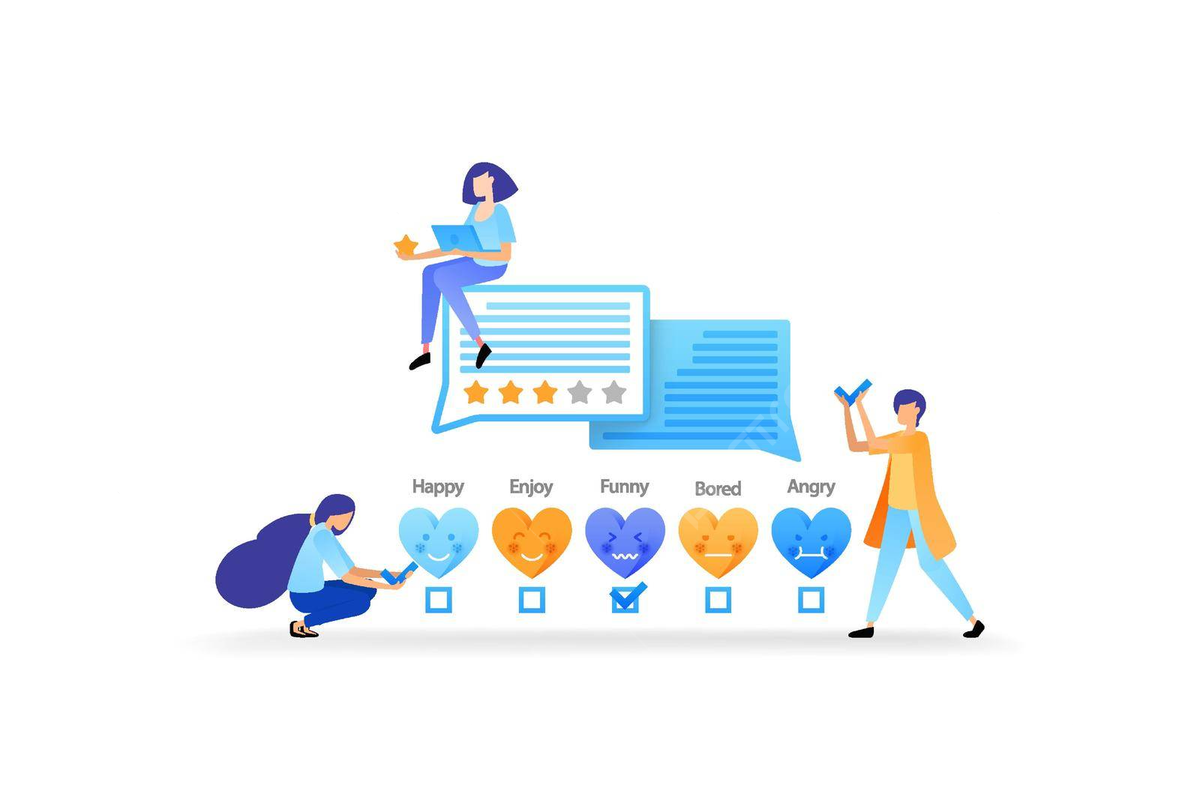You’ve been tasked with building an online community for ex-employees. Easier said than done, right? With disengaged alumni, negative perceptions, and limited resources, you’re facing an uphill battle. But the benefits could be game-changing. Increased Glassdoor ratings, lower attrition, better talent branding? Sounds like a win-win. Still, where do you start? How do you get buy-in? Stick with me as we explore the struggles and successes of creating an ex-employee platform. I’ll share the challenges I faced and the solutions that worked. You’ll walk away with a battle-tested blueprint for building a thriving alumni community.
The Challenges of Engaging Ex-Employees
A Sense of Disconnect
You know that feeling when you leave a job? That sense of detachment kicks in almost immediately. The company you once poured your heart into now feels like a distant memory. And engaging with ex-employees can be an uphill battle.
Disengaged alumni are one of the biggest hurdles. These former colleagues have emotionally checked out, making it tough to reignite their interest. It’s like trying to strike up a conversation with someone who’s already mentally moved on.
Negative Perceptions
Then there’s the potential for negative perceptions to take root. Maybe an employee left on less-than-ideal terms. Or perhaps they felt undervalued or mistreated. Whatever the reason, these negative experiences can cast a long shadow.
Getting those former team members to see your company in a positive light again? It’s an undertaking that requires finesse and a genuine commitment to addressing past grievances.
The Talent Branding Tightrope
But wait, there’s more! Engaging ex-employees also means walking a tightrope when it comes to your talent brand. On one side, you want to maintain strong relationships with alumni – they’re a valuable part of your company’s story.
On the other hand, you don’t want to come across as too clingy or desperate. It’s a delicate balance, one that requires a deft touch and a keen understanding of your former employees’ mindsets.
Lack of Resources
And let’s not forget about resources. Building and maintaining an engaged ex-employee community takes time, effort, and yes, money. Many companies simply lack the bandwidth or budget to devote serious attention to this endeavor.
It’s not just about throwing a yearly alumni event. True engagement requires consistent communication, valuable content, and a platform that facilitates genuine connection. Without proper resources, those efforts can quickly fall flat.
The Benefits of Building an Ex-Employee Community
Nurturing Lasting Connections
You’ve likely heard the saying “don’t burn bridges” when leaving a job. Building an ex-employee community helps reinforce those connections in a positive way. It allows your company to maintain relationships with talented individuals who were once part of your team. An active alumni network keeps those bonds strong long after they’ve moved on.
Boosting Your Reputation
Let’s be honest – having a poor reputation on sites like Glassdoor can seriously hinder hiring efforts. An engaged ex-employee community, however, gives former team members a place to share positive experiences. Their feedback and stories serve as powerful endorsements for potential candidates researching your brand.
Gaining a Competitive Edge
Here’s where things get really interesting. Your ex-employee network is an invaluable talent pool filled with individuals who intimately understand your company’s culture, processes, and vision. When new roles open, you have a ready-made list of pre-qualified candidates who can hit the ground running from day one.
Building Brand Ambassadors
Employees take pride in where they work – both past and present. An alumni program taps into that sense of loyalty and belonging. Providing this platform empowers former team members to be fervent advocates for your brand long after their tenure. It’s a win-win!
Accessing Valuable Insights
Who better to offer candid feedback about your organization than those who experienced it firsthand? Ex-employee communities enable open lines of communication. You gain unique perspectives that can refine operations, culture, and overall employee experience – insights a current staffer may be hesitant to share.
Maintaining positive relationships with former employees is a wise investment. An engaged ex-employee network positions your company as an employer of choice while expanding your leadership’s visibility into key areas for growth.
Creating an Online Ex-Employee Platform: Key Considerations
Make it Engaging
You want to create an online space that ex-employees actually want to be a part of. Make it engaging by providing valuable content and resources. Host webinars with career coaches who can guide them in their next steps. Offer online courses in areas like communication, critical thinking, and project management to help build new skills.
Foster Authenticity
An ex-employee platform is a great opportunity to get honest feedback about your company culture and workplace experience. Create a safe, judgment-free zone where former employees feel comfortable being authentic about the highs and lows. Use this insight to improve for current and future employees.
Highlight Success Stories
While negative reviews happen, you can counteract that perception by uplifting positive alumni stories. Share examples of how your company helped develop people’s careers and expertise. Seeing former colleagues succeeding at impressive roles reinforces your employer brand.
Make it Interactive
Don’t just broadcast content – make your platform interactive. Encourage discussion through forums, Q&As, and feedback channels. This drives engagement and gives you a pulse on what’s important to your ex-employee community. You can crowdsource ideas to keep iterating and improving the experience.
Add a Recruitment Angle
An added perk is using your ex-employee network for referrals and rehiring top talent. Make it easy for them to refer friends, get updates on open roles, and potentially boomerang back one day. Having this pool of experienced brand ambassadors is invaluable.
Best Practices for Maintaining an Ex-Employee Community
Foster Meaningful Connections
Building a thriving ex-employee community starts with fostering genuine connections. Provide training for mentors on supporting former staff in their career growth. This creates a culture of mutual support and goodwill towards your company.
Organize networking events, both online and offline, to facilitate relationship building. A simple virtual coffee chat can ignite new collaborations and open doors for your alumni.
Clarity in Communication
Clarity in branding and communication is key for an engaged ex-employee network. Ensure your messaging is consistent across channels – from the onboarding experience to regular updates.
Highlight the tangible benefits of staying connected, such as access to industry insights, job opportunities, and discounts on your products or services. Make it easy for former employees to understand the “what’s in it for me?”
Offer Continuous Value
An active community thrives on continuous value addition. Curate exclusive content like webinars, e-books or online courses tailored to your alumni’s professional interests. You could even offer discounted rates for your company’s training programs.
Leverage their expertise through guest blogging, podcasts or mentorship initiatives. This gives them a platform to share their knowledge while strengthening their bond with your brand.
Leverage Technology
Modern technology makes it easier than ever to build and nurture an online community. Invest in a user-friendly platform with features like discussion forums, groups based on interests, and automated reminders.
Integrate social media for increased visibility and engagement. Live streaming, virtual events and gamification can further elevate the experience for your ex-employee network.
Recognize & Reward
Recognition is a powerful motivator for sustained involvement. Celebrate the achievements and milestones of your alumni through features, awards or leaderboards within the community.
Identify super-users who actively participate and contribute. Offer them exclusive perks or opportunities to take on leadership roles. This nurtures a sense of ownership and pride in being part of your brand’s extended family.
FAQs About Ex-Employee Communities
What exactly is an ex-employee community?
An ex-employee community is an online platform that allows former employees to stay connected with their previous company and colleagues. It serves as a hub for networking, sharing career opportunities, seeking mentorship, and maintaining relationships even after leaving the organization.
Why should companies bother creating one?
There are several compelling reasons why fostering an ex-employee community can benefit companies:
- Better brand advocacy – Engaged alumni are more likely to speak positively about their former employer, boosting the company’s reputation.
- Talent pipeline – Former employees can provide referrals or even return as “boomerang” hires if the right opportunity arises.
- Valuable insights – Ex-employees can offer candid feedback about the company culture, policies, and areas for improvement.
- Continued learning – By staying connected, former employees may have access to training resources or events hosted by the company.
How do I get started?
Setting up an ex-employee community takes some planning, but it’s doable with the right strategy:
- Identify your goals and target audience
- Choose the right platform
- Establish clear community guidelines and moderation
- Promote the community through existing channels
- Assign dedicated resources to manage and facilitate engagement
What kind of content works well?
To keep members engaged, curate a mix of content including job postings, company updates, networking events, skill-building resources, and success stories. But don’t make it all about the company – ex-employees also want a space to connect socially.
How do I measure success?
Key metrics to track include active user counts, contributions (posts, comments), job referrals, rehires from the community, and survey feedback on the perceived value. Ultimately, you want evidence that the community strengthens your employer brand and talent pipeline.
Conclusion
So there you have it. Creating an ex-employee platform has its struggles, but the benefits make it all worthwhile. By putting in the effort to build an engaged alumni community, you can improve your employer brand, get honest feedback, and maintain connections with talented former team members. It takes strategy and resources, but the rewards are real. So embrace the challenges, get creative, and take steps to launch your own ex-employee platform. Do it for the culture, do it for the data, do it for the future of your organization. You got this.





 December 31, 2024
December 31, 2024
